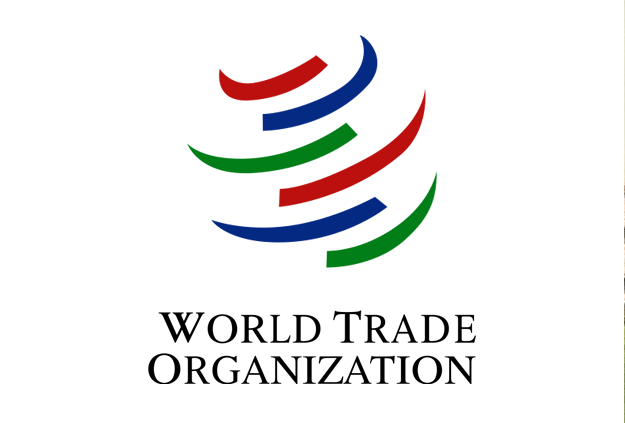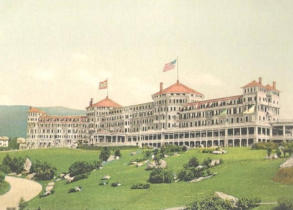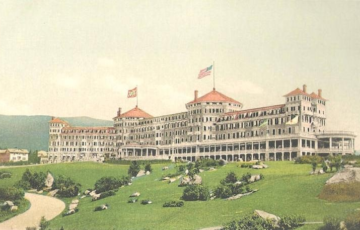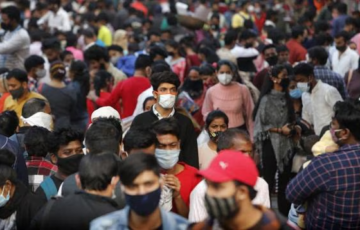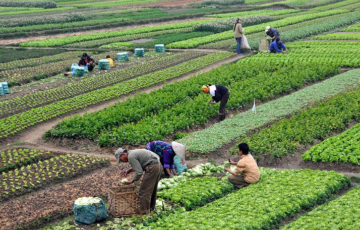WORLD TRADE ORGANIZATION (WTO)
Introduction and Evolution Timeline of the WTO
Establishment of GATT and ITO
- The General Agreement on Tariffs and Trade (GATT) was founded in 1947 as the cornerstone of the multilateral trading system.
- The foundation of GATT was laid during the Bretton Woods Conference in 1944, alongside the establishment of the International Monetary Fund (IMF) and the World Bank.
- The International Trade Organisation (ITO), proposed as a third component, aimed to regulate trade but failed to materialize due to the United States Senate’s failure to ratify the Havana Charter, finalised in 1948.
GATT Era
- GATT, signed by 23 nations in Geneva in 1947, aimed to reduce trade tariffs and phase out import quotas gradually.
- Despite structural issues, GATT facilitated eight rounds of negotiations and governed international trade from 1948 to 1995.
Establishment of the WTO
- The Uruguay Round, held between 1987 and 1994, led to the creation of the Marrakesh Agreement, establishing the World Trade Organization (WTO).
- WTO built upon GATT’s principles, providing a longer-term institutional framework and encompassing broader trade-related issues.
Objectives of WTO
- The primary objective of the WTO is to promote free trade for the benefit of all member nations.
- The key objectives include establishing and enforcing international trade regulations, facilitating further trade liberalization, resolving trade disputes, enhancing decision-making transparency, coordinating with other international institutions, and assisting developing nations in integrating into the global trading system.
Functioning of WTO
- The WTO promotes smooth, free, fair, and predictable trade through various mechanisms:
- Administering trade agreements
- Organizing trade negotiation forums
- Resolving trade disputes
- Monitoring national trade policies
- Providing technical support and training to developing countries
- Cooperating with other international institutions.
Governing Structure of WTO
- The Ministerial Conference, the highest decision-making body, convenes at least every two years.
- Between Ministerial Conferences, three bodies with identical memberships oversee day-to-day operations:
- The General Council
- The Dispute Settlement Body
- The Trade Policy Review Body
The General Council
- Highest Decision-Making Body
- Location and Routine Meetings: Situated in Geneva, the General Council serves as the principal decision-making entity of the World Trade Organization (WTO). It convenes regularly to fulfill its responsibilities.
- Authority Representation: Empowered to act on behalf of the ministerial conference, the General Council, composed of representatives from all member nations, carries out its functions in the absence of the biennial ministerial conference.
- Varied Meetings: Under different names like The General Council, The Dispute Settlement Body, and The Trade Policy Review Body, the General Council convenes to address various aspects of trade policy and disputes within the WTO framework.
The Trade Policy Review Body (TPRB)
- Reviews and Assessments
- Purpose: The WTO General Council transforms into the TPRB to undertake evaluations of Members’ trade policies as per the Trade Policy Review Mechanism (TPRM). Additionally, it considers the Director-General’s regular reports on trade policy evolution.
- Inclusive Participation: All WTO Members have the opportunity to engage in the TPRB, fostering transparency and cooperation in assessing trade policies across member nations.
The Dispute Settlement Body
- Resolving Trade Disputes
- Dispute Resolution Mechanism: In cases of disagreements between WTO members, the General Council convenes as the Dispute Settlement Body (DSB). These disputes may arise from any agreement within the Uruguay Round’s Final Act, subject to the Understanding of Rules and Procedures Governing Dispute Settlement (DSU).
- Authority and Functions:
- Establishment of dispute resolution panels.
- Referral of disputes to arbitration.
- Adoption of reports from panels, Appellate Body, and arbitration.
- Oversight of implementation of recommendations and rulings.
- Authorization for the suspension of concessions if recommendations and rulings are not adhered to.
Principles of WTO
Guiding Principles for International Trade
- Non-Discrimination:
- Most Favoured Nation (MFN) Rule: Mandates equal treatment for all trade with other Member nations, ensuring that preferential conditions are extended to all WTO members.
- National Treatment Policy: Aims to address non-tariff trade barriers by treating imported commodities equally to domestically produced items after reaching the market.
- Reciprocity:
- Balanced negotiations aiming to improve market access while preventing free-riding under the MFN rule.
- Ensures that reciprocal concessions lead to mutual benefits and incentivize participation in negotiations.
- Binding and Enforceable Commitments:
- WTO members commit to tariff obligations listed in a schedule of concessions, ensuring legal enforceability of trade agreements.
- Transparency:
- Disclosure of trade regulations, establishment of review institutions, and notification of policy changes to the WTO.
- Trade Policy Reviews enhance internal transparency requirements through periodic country-specific reports.
- Safety Valves:
- Governments retain the authority to impose trade restrictions under specific conditions, safeguarding environmental and public health interests in accordance with WTO agreements.
Issues and Challenges with the World Trade Organization (WTO)
Institutional Problems
- As a result of the US’s blocking of appointments, the Appellate Body of the WTO lacks the necessary quorum (3 out of 7 adjudicators) to hold hearings on appeals, effectively suspending operations since December 2019. The US perceives the WTO as not acting in its best interests, particularly in failing to address China’s ascent and routinely accusing the US of wrongdoing in trade disputes. The crisis in the WTO’s dispute settlement function is closely linked to the breakdown of its negotiation function.
Lack of Transparency
- WTO negotiations face difficulties due to a lack of consensus on the classification of developed and developing countries. Members can declare themselves as developing countries to receive “special and differential treatment,” leading to controversy.
E-commerce & Digital Trade
- Established in 1998, the WTO e-commerce moratorium aimed to investigate trade-related matters related to international electronic commerce. The Covid-19 pandemic accelerated the shift to e-commerce, highlighting the importance of regulating online trading, which currently faces fewer international regulations than traditional commodity and service trading.
Development and Agriculture
- The Agreement on Agriculture, enforced in 1995, seeks to reduce excessive trade barriers and subsidization affecting agricultural trade. However, concerns about food security and the developmental needs of nations like India hinder progress in agriculture negotiations.
Public Stockholding for Food Security Purposes
- Despite agreements reached at the 2015 Nairobi ministerial meeting, no solution has been found for public stockholding for food security. While nations agreed not to face legal action if they exceed caps (the “peace clause”), a long-term solution is needed to avoid classifying budgetary support from the Minimum Support Price (MSP) as trade-distorting.
Regulating Irrational Fishing Subsidies
- Irrational fishing subsidies, particularly by top fishers like China, contribute to the overexploitation of marine resources, necessitating regulation.
Fragmentation of Global Governance
- The WTO’s impasse has led to the emergence of mega plurilateral trade agreements, such as RCEP and CPTPP, contributing to the fragmentation of global governance.
Inadequate Capacity to Address Emerging Issues
- The WTO’s technical capacity is insufficient to address key issues threatening its relevance in the 21st century.
Most Favoured Nation (MFN) Status
- While every WTO member has MFN status, exempting developing nations, disputes arise over countries like China and India utilizing this status despite their global economic rankings.
Lack of Consensus
- The 2013 Trade Facilitation Agreement stands as the only new agreement introduced by the WTO, showcasing the difficulty in reaching consensus due to prolonged negotiations.
Increasing Protectionism
- Protectionist measures adopted by countries like the US and UK have disrupted global supply chains, employment, and economic growth, exacerbating trade disputes.
Deregulation
- WTO regulations sometimes override national sovereignty, impacting labor and environmental protections, while criticisms emerge regarding unfair labor practices and wage suppression.
Import Competition
- Tariff reductions facilitated by the WTO have led to increased reliance on imports, negatively affecting domestic jobs and wages.
Interference with Operative Assumptions
- State enterprises engaged in commercial activities interfere with the operative assumptions of GATT/WTO, which assume international trade is primarily conducted by private sector operators.
WTO Subsidies Regime:
- The World Trade Organization (WTO) employs a system of categorizing subsidies into various “boxes” based on their impact on trade. These boxes are color-coded according to traffic lights: Green (authorized), Amber (require reduction), and Red (forbidden). However, agriculture subsidies are more complex, lacking a red box and incorporating a blue box for certain subsidies.
Categorization of WTO Subsidies:
- Export Subsidies:
- Export subsidies are financial aids provided to promote exports without negatively impacting the domestic economy.
- Example: China offers export financing to farmers to boost agricultural exports.
- Subsidies for Cereal Promotion:
- These subsidies are aimed at supporting specific agricultural sectors, such as cereal production.
- Example: The UK farming bill post-Brexit ensures subsidies until 2020 to support agribusiness.
- Structural Adjustment Subsidies:
- These subsidies are designed to encourage structural changes or improvements in agricultural practices, such as irrigation.
- Example: PM Krishi Sinchai Yojana in India promotes irrigation in agriculture.
- Regional Development Subsidies:
- Intended to enhance the well-being of rural farmers and improve their contribution to national development.
- Aim to create inclusive and resilient rural societies.
- Research and Development Subsidies:
- Financial incentives provided for research and development activities to support innovation in agriculture.
- Companies engaged in innovative projects can receive these subsidies.
- Subsidies Contingent upon Domestic Goods:
- Subsidies provided with the condition that domestic goods are used over imported ones.
- Example: In the USA, farmers are encouraged to purchase domestic goods, indirectly lowering prices for consumers.
Agreement on Agriculture (AoA):
- Negotiated during the GATT’s Uruguay Round and established with the creation of the WTO in 1995.
- Aims to reform agricultural trade by establishing a fair and market-driven system.
- The AoA categorizes subsidies into three types:
| Subsidy Category | Description | Example | Limitation |
| Green Box | Subsidies with minimal distortion or no impact on trade. | Government services related to infrastructure, food security, disease management, research, farmer subsidies that do not impact global trade, regional development, and environmental conservation programs. | Allowed without limit as long as they meet specific criteria for each policy. |
| Amber Box | Domestic subsidies with the potential to distort trade and production. | Price support measures, most domestic subsidies fall under this category. Exceptions include subsidies up to 5% of agricultural production for developed countries and 10% for developing countries. | Most domestic subsidies, limited exceptions based on production percentage. |
| Blue Box | Subsidies from the Amber Box that restrict production but are tied to programs limiting production. | Subsidies linked to programs restricting production. | Currently, there is no limit on the amount of money that can be spent on Blue Box subsidies. |
Market Access in the WTO
- Market access in the World Trade Organization (WTO) pertains to the conditions, tariffs, and non-tariff measures agreed upon by members for the entry of specific goods into their markets. It involves gradual tariff reduction and the elimination of non-tariff barriers to promote free trade. Continuous efforts to improve market access are made through regular WTO work programs and negotiations, including those initiated at the Doha Ministerial Conference in November 2001.
Domestic Subsidies
- Domestic subsidies are incentives provided by governments to domestic industries, including agriculture, which can distort free trade and pricing. The Agreement on Agriculture categorizes subsidies into Green Box, Amber Box, and Blue Box categories. Developed countries are required to reduce domestic support policies by 20%, while developing countries by 13.3%, measured by the Total Aggregate Measure of Support (total AMS). The WTO sets minimum levels of permissible domestic support, known as De Minimis levels, which vary for developed and developing countries.
Export Subsidies
- Export subsidies are financial aid programs aimed at reducing the cost of exporting agricultural goods. However, they can lead to the dumping of heavily subsidized goods, negatively affecting local agricultural industries in importing countries. WTO members are prohibited from employing export subsidies for agricultural products. Developed nations are mandated to cut export subsidy spending and volume, while similar requirements apply to developing nations over specified periods.
Peace Clause under WTO
- The issue of domestic support for farmers, particularly for food security, led to conflicts between developed and developing countries. To address this, a temporary peace clause was introduced at the Bali Ministerial Conference in 2013, ensuring that countries could participate in food security initiatives even if subsidies exceeded WTO thresholds. India invoked the peace clause multiple times, most notably in 2020, 2021, and 2022, when subsidies for rice farmers exceeded the 10% cap, highlighting the ongoing tensions and negotiations surrounding agricultural subsidies within the WTO framework.
Most Favoured Nation (MFN) Status
Most Favoured Nation (MFN) status is a critical concept in international trade agreements, aimed at promoting non-discriminatory trade relations among nations. Let’s explore its significance, implications, and advantages:
Definition and Significance
- Non-Discriminatory Treatment: MFN status ensures that a trading partner receives treatment equal to the most favourable treatment given to any other trading partner.
- General Agreement on Tariffs and Trade (GATT): MFN is the first clause of the GATT, highlighting its importance in international trade agreements.
- Non-Preferential Treatment: Despite the term “favoured,” MFN does not imply preferential treatment but rather equal treatment without discrimination.
Implications and Implementation
- Prohibition of Discrimination: WTO member states are prohibited from discriminating between different trade partners. Any special treatment granted to one partner must be extended to all WTO members.
- Trade Barriers and Tariffs: Nations with MFN status are expected to lower trade barriers and tariffs, facilitating the free flow of goods and promoting trade.
- Removal of MFN Status: MFN treatment can be suspended at any time by a nation, although there is no formal procedure for doing so. Removal of MFN status can be a response to geopolitical tensions or economic considerations.
Advantages and Disadvantages
- Advantages for Developing Nations:
- Access to wider markets and reduced tariffs lead to increased trade.
- Lower export costs and increased competition benefit domestic industries.
- Bureaucratic hurdles and tariffs are standardized for all imports, promoting economic growth.
- Disadvantages:
- Price wars and vulnerability of domestic industries to cheaper imports.
- Inability to protect domestic industries against unfair competition, leading to losses and stifled growth.
Trade-Related Aspects of Intellectual Property Rights (TRIPS)
- The TRIPS agreement, a component of the World Trade Organization (WTO), governs the protection of intellectual property rights (IPRs) among member nations.
Overview and Purpose
- International Legal Agreement: TRIPS sets minimum standards for how member nations regulate various types of intellectual property rights.
- Multilateral Agreement: Enacted in 1995, TRIPS is the most extensive multilateral agreement on intellectual property, aiming to promote innovation and technological advancement.
- Administration: The TRIPS Council monitors and administers the implementation of the agreement among member nations.
Key Provisions
- IPR Protection: Member states must provide strong protection for intellectual property rights, covering copyrights, patents, trademarks, and geographical indications.
- Copyright Protection: Authors, performers, sound record producers, and broadcasting companies are granted copyright protection.
- Dispute Resolution: TRIPS outlines processes for resolving disputes, enforcing rights, and providing remedies for infringements.
Geographical Indications (GI)
- Geographical indications (GI) are tags used to identify goods with specific geographic origins and characteristics.
- Definition: GI identifies products with a specific geographic origin, ensuring they meet specified standards.
- Legal Framework: The Geographical Indications of Goods (Registration & Protection) Act, 1999, protects GIs in India and enables owners to prevent unauthorized use of indications.
- Example: Darjeeling Tea was the first Indian product to receive GI recognition in 2004, highlighting the importance of protecting geographic indicators.
- Understanding concepts like MFN status and TRIPS is essential for navigating international trade agreements and ensuring fair and non-discriminatory trade practices among nations. Similarly, safeguarding geographical indications protects the integrity and reputation of products with specific geographic origins.
India’s Trade Concerns And WTO
Tariff on Steel and Aluminium
- The imposition of tariffs on steel and aluminium by the US government has sparked concerns for India. These tariffs, set at 10% for aluminium and 25% for steel, have prompted India to consider WTO intervention to address the issue.
Export Subsidy Issue
- India’s export subsidy system, including programs like SEZ, MEIS, and EPCG, has drawn scrutiny from the United States, leading to a dispute at the WTO. The US argues that India’s increased per capita income disqualifies it from utilizing export subsidies under the Agreement on Subsidies and Countervailing Measures (ASCM).
Subsidies for Agriculture
- India’s subsidies for agriculture, particularly the minimum support price (MSP) concept, fall under the Amber box category at the WTO. The current allotment of subsidies, based on outdated price indices, raises concerns. India advocates for revisions to reflect current price levels and seeks to eliminate the Amber box concept.
Special and Differential Treatment (SDT)
- Developing countries, including India, are entitled to preferential treatment under the Special and Differential Treatment (SDT) provision agreed upon during the Doha Round. However, developed nations are reluctant to grant such treatment, arguing against its applicability to countries like China and India.
Concerns about Intellectual Property Rights
- India faces challenges regarding intellectual property rights (IPR) at the WTO, particularly under the Trade-Related Aspects of Intellectual Property Rights (TRIPS) agreement. While TRIPS has resolved issues like mandatory licensing for pharmaceuticals, developed countries continue to push for stringent IPR agreements.
WTO and Indian Agriculture
- India, with its predominantly agrarian economy, places significant emphasis on food and livelihood security. At the WTO, India advocates for a long-term solution to public stockholding subsidies, crucial for food security measures. The peace clause, established at the 2013 Bali Ministerial Conference, offers temporary relief but requires a permanent resolution.
Non-Trade Issues
- Non-trade issues, such as labour standards, environmental protection, and human rights, have become contentious topics at the WTO. Developed countries seek to include these issues in WTO agreements, potentially imposing protectionist policies that could adversely affect developing nations like India.
UPSC PREVIOUS YEAR QUESTIONS
1. The terms ‘Agreement on Agriculture’, ‘Agreement on the Application of Sanitary and Phytosanitary Measures’ and ‘Peace Clause’ appear in the news frequently in the context of the affairs of the____________ (2015)
1. Food and Agriculture Organization
2. United Nations Framework Conference on Climate Change
3. World Trade Organization
4. United Nations Environment Programme
2. India enacted Geographical Indications of Goods (Registration & Protection) Act, 1999 in order to comply with the obligation to – (2018)
1. ILO
2. IMF
3. UNCTAD
4. WTO
3. Which of the following has/have been accorded geographical indication (GI) status? (2015)
1. Banaras Brocades and Sarees
2. Rajasthani dal-baati-churma
3. Tirupati laddu
Select the correct answer using the code given below.
(a) 1 only
(b) 2 and 3 only
(c) 1 and 3 only
(d) 1, 2 and 3

